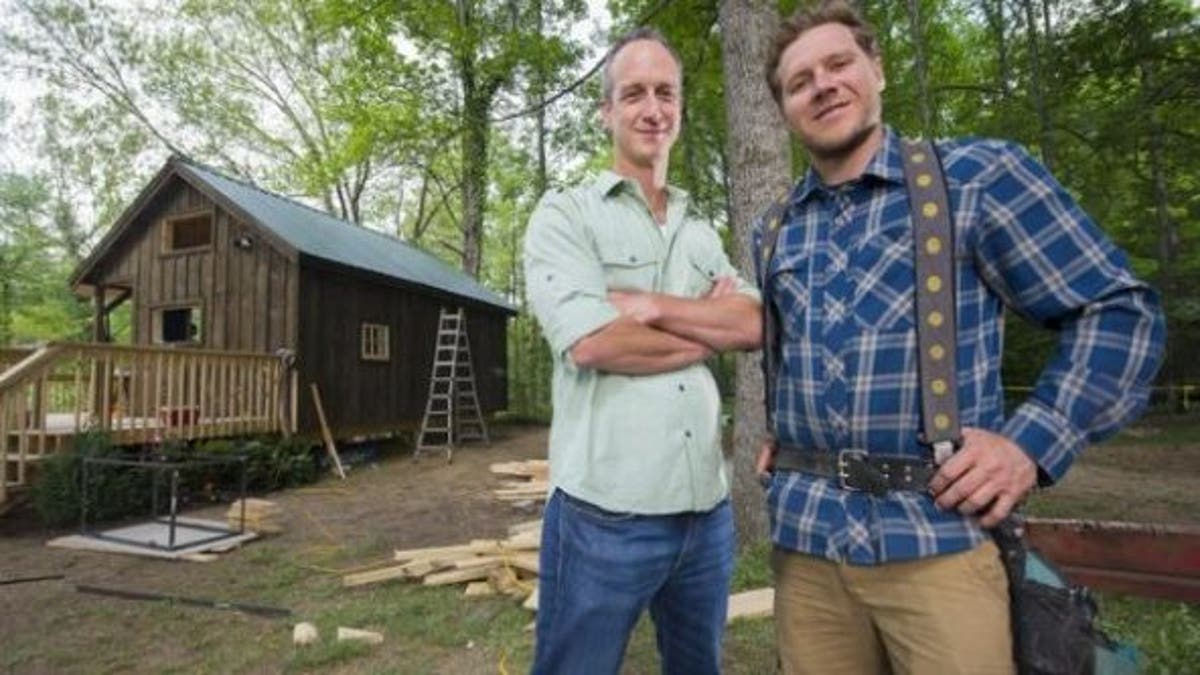
john-weisbarth-and-zack-giffin-tiny-house-nation-tv-hosts-600x336
Everyone is fascinated by tiny houses these days, which explains the popularity of FYI’s “Tiny House Nation,” in which hosts John Weisbarth and Zack Giffin help people buy or build miniature abodes, each no larger than 500 square feet.
Weisbarth, a handyman, and Giffin, a contractor, help their clients consolidate their belongings, throw out the extraneous clutter, and then squeeze into their new homes. After a couple of months, the pair return to see how these new homeowners are dealing with their diminutive digs.
Spoiler alert: It’s never easy (duh). Curious to learn more of the good, bad, and ugly about tiny houses, we chatted with the hosts and got some honest answers to all of our burning questions.
Q: Do either of you live in a tiny house?
More From Realtor.com
Giffin: Yes, I built a tiny house in 2011 and lived in it until I got hired to work on “Tiny House Nation.” Since then, I only get home a few times a year and spend most of my time in hotels.
Weisbarth: The house I own with my wife and 4-year-old is 1,300 square feet. Not gigantic, but certainly not a tiny house. For me, the prospect of living small is more attractive than living tiny.
FYI
Q: What’s the smallest house you’ve ever seen?
Weisbarth: The tiniest house we’ve built was around 170 square feet for a family of three. The smallest house I’ve seen was probably around 80 square feet.
Q: What’s the difference between a tiny house and the basic travel trailer?
Weisbarth: People ask me this all the time, and the simple answer is that a tiny house feels like a home. A trailer feels like a trailer!
Giffin: The quality of the building is the short answer. It’s a space designed where the priority is on permanent living as opposed to mobility. Good examples of these priorities include vaulted ceilings, better insulation, and natural quality materials.
FYI
Q: Why do you think tiny houses are so popular?
Weisbarth: They afford you more free time (less space to maintain) and more money. That’s an attractive proposition, whether your goal is to save money, spend more time with your family, or pursue your dream of graduating from clown college.
Giffin: We have a situation in our country where the value of housing has outpaced incomes for decades. … For many people, the American dream has become out of reach. People are going to tiny houses to escape treading water financially and to pursue the things that make life worth living.
FYI
Q: What’s the worst thing about tiny houses?
Weisbarth: They are really small! I say that with my tongue firmly planted in my cheek, but that doesn’t mean it’s not true. As Americans, we’ve become accustomed to living in large homes, and making the transition can be jarring and uncomfortable. The trick is to stay with it.
Giffin: The hardest part is balancing multiple people in a small space. One of the positives is that it provides an opportunity to work on communication between family members, which often grows a healthier relationship.
FYI
Q: How much do tiny houses cost?
Weisbarth: The most economical house we built was $40,000. There’s a perception that you can build your own tiny house for $8,000 to $12,000, and while that may be possible, that requires doing the labor yourself and getting material donated.
Giffin: I’ve been a part of builds that are basic—maybe $35,000. But if you solely focus on cost, a tiny house can lose the custom aspects that make tiny houses so appealing.
TinyHouseBasics.com
Q: What’s the one thing people regret not having in a tiny house?
Weisbarth: For some reason, when people are designing their tiny house they always forget a dining table. Even when you were in college it was annoying to eat on the couch with your plate in your lap. Don’t forget a table!
Giffin: It’s OK for your house to grow with your family. The idea of living tiny is really about living appropriately to your needs without excess. Your house is supposed to support your life and not the other way around.
FYI
Q: What’s the biggest challenge to tiny-house living?
Weisbarth: Where you can legally build and/or park them. Every county has its own zoning regulations, and most of them require some minimum square footage to be considered a habitable dwelling. The good news is that more and more communities have started to change their zoning laws to include tiny houses. Just this December, the International Code Council voted to adopt tiny-house-specific building codes that will become part of the 2018 International Residential Code, which is a big step in making tiny houses legal.
Q: What’s the best way to cope with jettisoning all your possessions?
Weisbarth: Instead of concentrating on all the stuff you’re losing, think about what you gain: freedom. The best way to do that is to identify a few things that you truly love, the activities that feed your soul but you never have time for, like music or art. Figure out what those things are, then get rid of everything else. Congratulations, you just created room in your life to do the things that bring you happiness.
The post 'Tiny House Nation' Hosts Get Honest About Going Small—Warts and All appeared first on Real Estate News & Advice | realtor.com®.